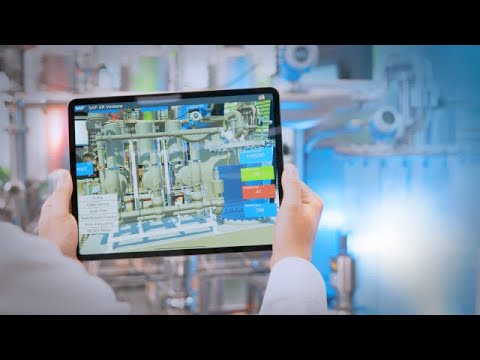Extended reality (XR) is no longer new, supporting businesses around the world in simulating critical business processes before they are implemented. Going forward, this technology will provide customers with the insight to help avoid design mistakes and reinvent how businesses are run.
To make this possible in an easy and simple format, the XR Cloud was developed by SAP starting in late 2019 as part of a customer co-innovation project. It is based on the Unity3D platform, which allows XR applications to be built for more than 25 platforms. While Unity developers are experts in designing XR applications, they may lack SAP expertise. Therefore, XR Cloud and Unity Integration Toolkit bring these worlds together. Unity developers and XR designers can easily integrate digital twin threads and other SAP data into Unity and build an ERP-powered XR application for SAP customers, supporting them to run at their best.
Development of XR Cloud
In the business world, extended reality is a topic that has been popular for some time, but the technology could not always fulfill customer expectations.
Now, extended reality is more familiar. XR is the umbrella term for augmented, mixed, and virtual reality, or technology that helps customers visualize business data in new ways. With XR, business data is no longer bound to a computer screen. The data can be connected or “augmented” to the physical, such as a building, an assembly line in a factory, or a machine providing services in the field. Service operations and work instructions can now be better understood and executed by the user, saving time and increasing product quality.
The technology concept of “smart assets” was the foundation of this XR venture. The Unity3D platform supports all major XR devices, but also mobile augmented reality (AR) devices.
The smart assets are 3D — for example, complex CAD drawings — or 2D objects — for example, barcode labels, documents, or SAP terminals — that reside in an SAP system. Smart assets are considered smart because they contain scripting logic to interact with other smart assets or to retrieve and exchange data in real time to SAP systems.
Smart assets are stored in the XR Cloud and open up the world of SAP to the world of XR applications. They can be used during design by any third-party application that is written in Unity and can be embedded during the run phase into the third-party application.
The vision is that companies can share their smart assets throughout SAP Business Networks. Imagine customers downloading a smart asset from Ariba before they order the physical asset. Following this approach, many validations can be done in advance, such as how the model of an equipment fits into a plan and can be connected to the IT system. Returns of the physical equipment can be avoided and the company’s carbon footprint is minimized.
Augmenting the Future
Considering the possibilities of the technology, a multitude of use cases are imaginable. At SAP, we identified two areas where we see the most potential and customer value today: augmented and mixed reality for service, maintenance, and quality inspections of assets.
Operators in a factory or in the field do not need to browse through spare part catalogs or do paperwork anymore. As the smart asset augments digital twin information directly to the physical counterpart, users get “in-context” access of real-time enterprise information and transactions.

Business Process Modeling and Training in Virtual Reality
IT projects that affect many business processes are often challenging. Many stakeholders need to understand the new process and its implications to their domain. To achieve a common understanding of the new business process, on-site workshops are organized and many documents are shared and reviewed. But still, when the IT project goes live, design flaws are discovered, leading to high costs that may even cause production to stop.
Many of these design flaws and misunderstandings can be avoided if virtual reality technology is used in a new way along the journey, through “virtual commissioning.” Today, this approach is being used for machines, not yet for business processes. For “virtual business process commissioning,” more requirements must be met, such as:
- Simulation of the location where the business process is executed
- Simulation of the IT system to run the business process
- Simulation of the people, tools, machines, and robots connected to the IT system
Here, smart assets can play a major role, as they are able to simulate the IT system as well as tools, machines, and robots to bring the virtual business process very close to the reality.
There is still much to learn about application cases, especially which ones make most sense from a business perspective. But one thing is clear: XR will not see mass adoption just because of the innovative nature of the technology. There must be clear and measurable business value to justify the investment in innovations driven by XR technology. The potential of XR is just starting to be explored. Use cases could be manifold, from collaboration and conferencing, applications in marketing and sales, to completely revolutionizing the way we interact with computers.
BearingPoint Is First Customer On Board
One customer piloting the use of smart assets and virtual reality to introduce new IT processes is BearingPoint. The management and technology consulting company is currently implementing SAP S/4HANA for its customers and will showcase the use case of XR Cloud for visualization and virtual process simulation of business processes, working to ensure that the user departments understand the new SAP processes. Being a front runner, BearingPoint plans to bring value to its customers by leveraging this technology to reduce implementation effort.
Michael Spiess is the Extended Reality Venture lead at SAP.
*These materials are not sponsored by or affiliated with Unity Technologies or its affiliates. “Unity” is a trademark or registered trademark of Unity Technologies or its affiliates in the U.S. and elsewhere.



